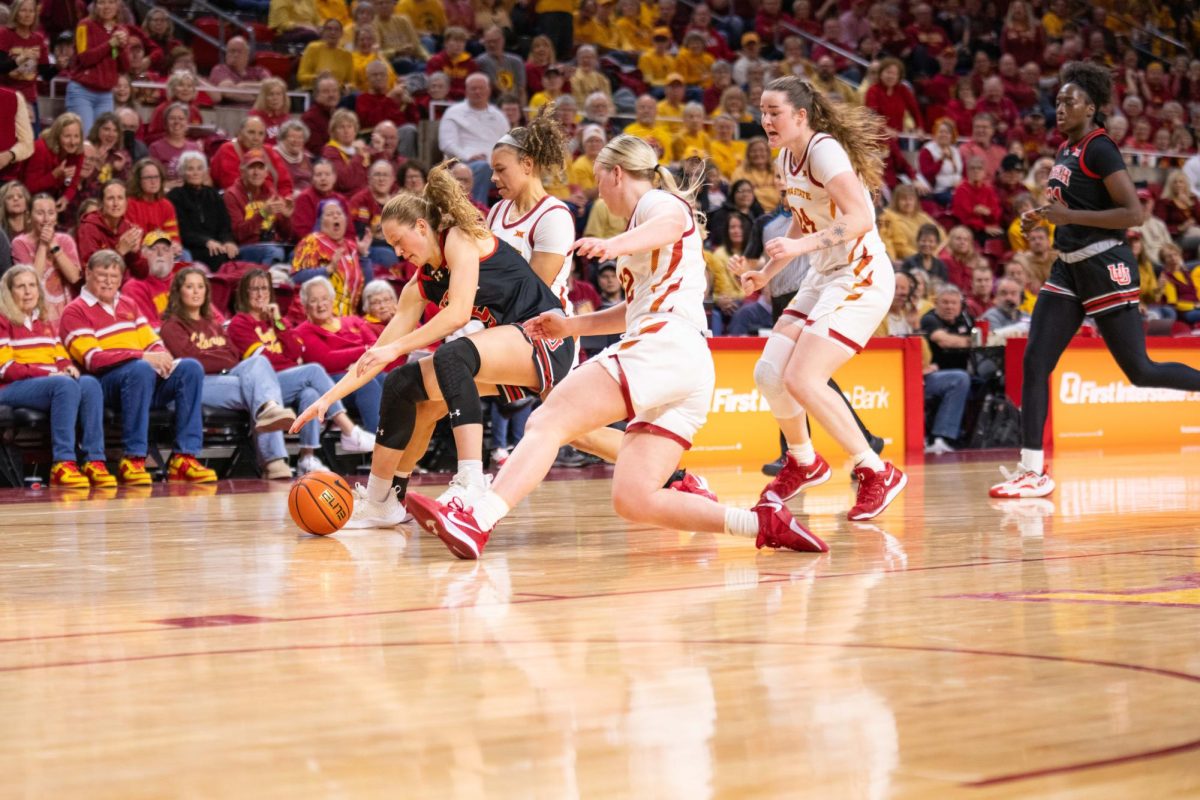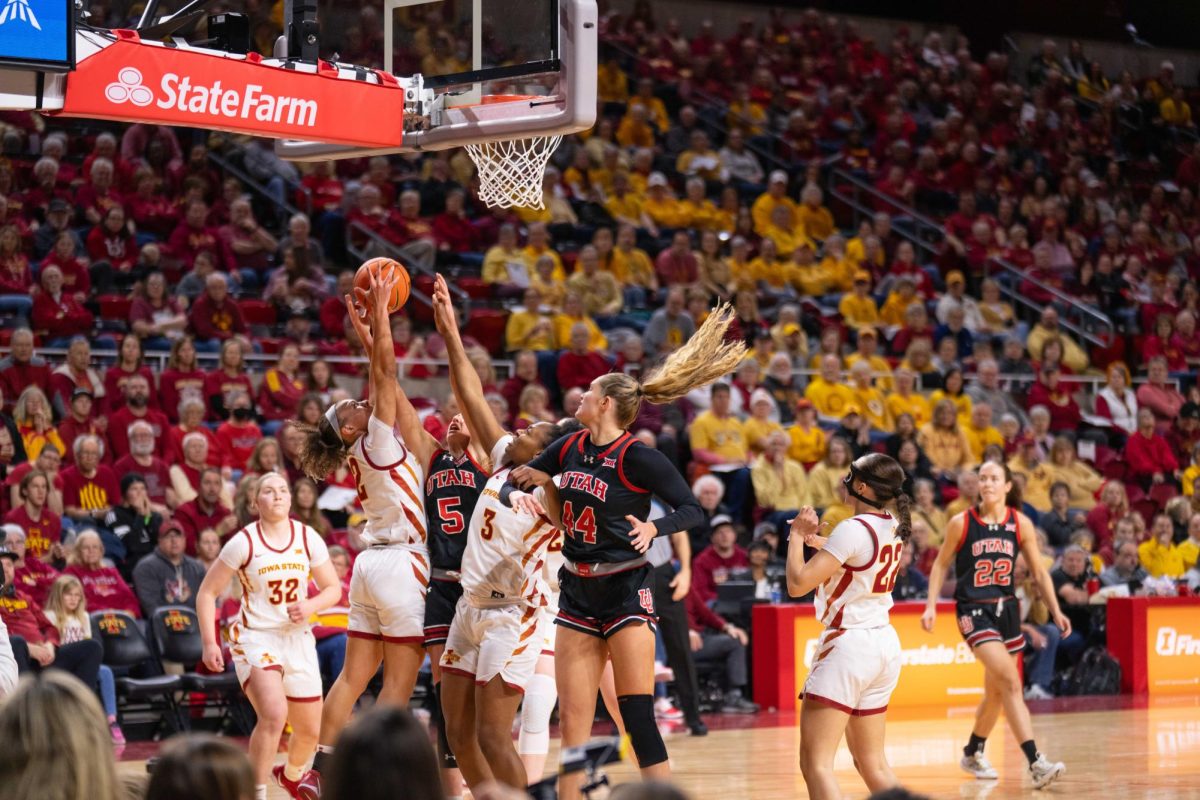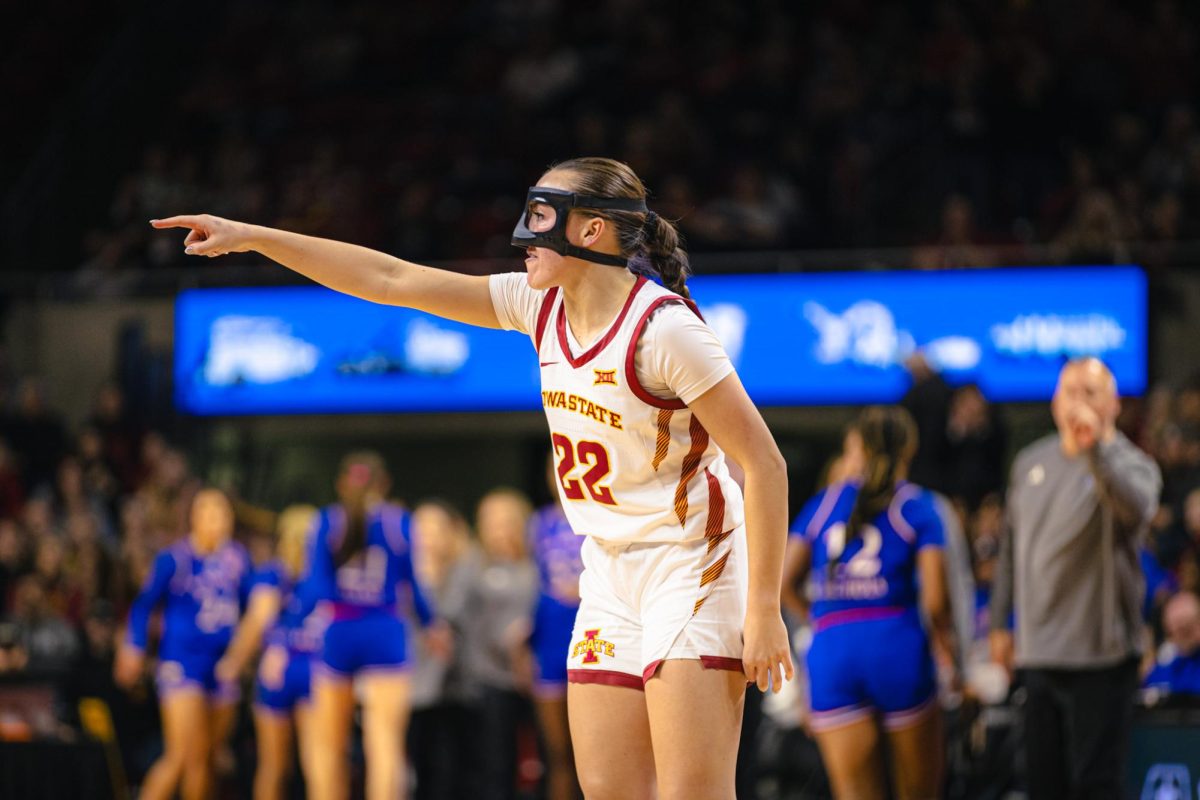LASIK surgery is near-perfect solution for vision problems
April 3, 2001
Tyson Martinez was tired of eye infections, contact lens problems and the inconvenience of glasses.
A former Cyclone pitcher, Martinez, senior in management information systems, said he had LASIK eye surgery in January to correct his nearsightedness.
Martinez’s optometrist suggested LASIK as a vision-correction option to relieve his eye problems. Martinez said he considered undergoing surgery earlier because he thought it would be beneficial to him as a pitcher. As a busy student-athlete, Martinez said he didn’t have enough time to have the surgery done, so he waited until Christmas break.
The day after the surgery, Martinez could see much better, but his sight was foggy, and his eyes felt dry, he said. Within eight days, however, his vision was perfect, and his eyes felt fine.
“I can get up and open my eyes and see,” he said. “If you want to see, go get it done.”
Comments from thrilled patients, such as Martinez, combined with rumors of cheap Canadian surgeries and botched eye jobs can leave a person’s head spinning. Is this procedure safe? How much does it cost? Can it correct vision problems?
The procedure
Fran Ali, the refractive coordinator for the Tobin Eye Institute in West Des Moines, said Laser in-Situ Keratomileusis, or LASIK, was approved by the FDA for clinical trials in 1995. She said almost 2 million of these procedures were performed in the United States last year, and this number is predicted to increase because of advances in LASIK technology.
“The goal of LASIK is to help people who want to reduce their dependence on glasses or contacts,” Ali said.
John E. Kruger, optometrist at the Ames Eye Clinic, 1001 Douglas Ave., said he suggests LASIK to his patients if contacts or glasses don’t work for them or are a hindrance. But he also tries to give a balanced presentation of a patient’s vision correction options. “It’s another option for people to see better,” he said. “It’s not a perfect procedure. It’s not going to work for everyone.”
Louis J. Scallon, ophthalmologist at the Wolfe Clinic, 1114 Duff Ave., said he has performed about 1,500 LASIK procedures in the past four and a half years.
“We can treat almost any refractive error now,” he said.
For a patient to be a good candidate for LASIK, they must have a stable prescription, healthy eyes and not be pregnant, he said.
Kruger said a LASIK patient’s correction needs to be within the surgery’s parameters. He said about 5 percent of people with vision problems cannot use this type of correction because they have extreme cases of nearsightedness, farsightedness or astigmatism.
During LASIK, the excimer laser vaporizes a layer of corneal tissue that is thinner than a human hair, Scallon said. The Wolfe Clinic currently uses a scanning excimer laser to track eye movement during the surgery, he said, which gives relief to patients concerned about moving their eye during the procedure.
The procedure usually takes five minutes per eye, Scallon said, and only 40 to 60 seconds of this period consists of laser treatment. During this time, the eyes are numbed with eye drops and held open with eyelid holders, he said.
Complications rarely occur during LASIK, he said. In less than 1 percent of the surgeries he has performed, Scallon said, he has stopped because the flap in the cornea was not cut smoothly. When this happens, the eye is allowed to heal before he tries again, he said.
“It is surgery,” Kruger said. “Patients need to realize that things can go wrong.”
Martinez said the surgery went smoothly on his first eye. However, he said he did experience pain for a few seconds when his second eye was treated. This eye had been infected, but medications cleared them up before the surgery, he said.
Scallon said he had LASIK surgery performed by one of his colleagues three years ago and did not experience any pain during the procedure.
“It was very exciting; one of the neatest things I’ve ever done,” Scallon said. He said he distinctly remembers looking outdoors and being able to see trees the first night after the surgery.
Most of the Wolfe Clinic staff also have had LASIK surgery, Scallon said. “I think it tells people that we put a lot of faith in the procedure,” he said.
College students and cost
Scallon said he has performed LASIK on several hundred college students. He said it is important that patients are at least 18 or 19 years old so their eyes have had time to stabilize. Scallon also said students should be familiar with the surgery before considering it.
For most college students, cost is a major factor in determining what type of vision correction to use.
Ali said few students can afford LASIK before they graduate because they are paying for college expenses. She said parents often give their children LASIK surgery as a graduation gift. The Tobin Eye Institute is very busy over spring and holiday breaks when students usually have the procedure done, she said.
Martinez, whose parents paid for his surgery as a Christmas present, said money wasn’t a factor in his decision to have LASIK done.
“It’s your sight,” he said. “I don’t think you can put a price on that.”
Scallon said the entire LASIK procedure costs $1,850 per eye, including care, drops and follow-up surgeries at his clinic. Kruger said LASIK usually costs $3,800 to $4,200 for both eyes.
Both Scallon and Kruger expressed concern about patients who go out-of-state or to Canada to get LASIK done at a lower cost. Scallon said it is harder for these patients to get touch-ups done, and the clinics don’t always arrange for follow-up care.
“In my opinion, if you’re going to economize on something, your eyes are not the place to do it,” he said.
Before patients choose a surgeon, they should ask about the surgeon’s experience, visual results and follow-up surgery rate and policies, Scallon said.
“The more you’ve done, the better you are at it,” he said. “I think experience is important.”
LASIK results
Ali said 88 to 90 percent of LASIK treatments performed in the United States have resulted in 20/40 vision or better after one surgery. These patients don’t need corrective lenses to pass a driving test or to do everyday tasks, she said.
About 7 percent of LASIK patients – often people who were extremely nearsighted before surgery – have follow-up surgeries to further improve their sight, Scallon said.
Kruger said he believes it is very important for patients to have reasonable expectations of the procedure. There are several problems LASIK patients commonly encounter after surgery, he said, such as experiencing glare and flare in their night vision. However, Kruger said this is becoming less of a problem thanks to new laser technology.
He also said LASIK patients who are 40 or older usually need reading glasses after the procedure. “By far, most people are happy with the results and are willing to wear glasses for the times they need them,” he said.
After having LASIK performed two years ago by Robert F. Tobin of the Tobin Eye Institute to correct his nearsightedness, Kruger still wears glasses sometimes and has problems with night driving.
“Sometimes you just have to accept the fact that this is as good as it’s going to be,” he said.






